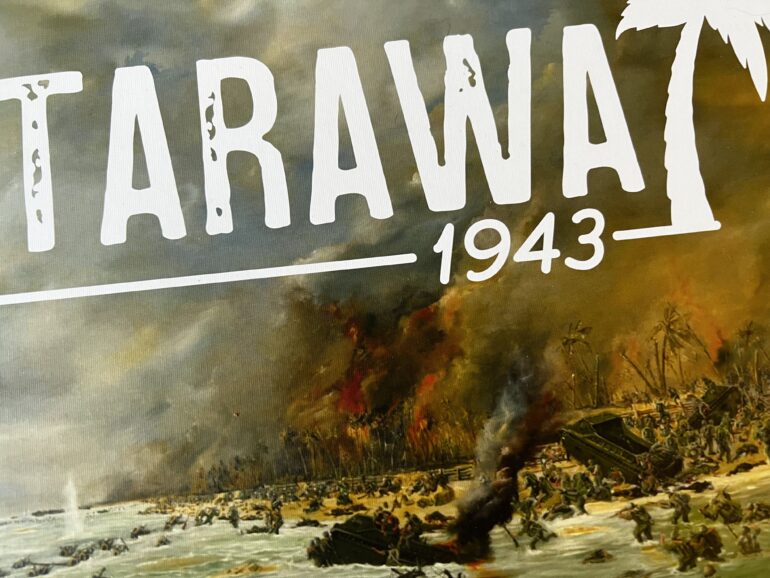
Small dollops of land scattered within vast amounts of ocean became key strategic points in moving the US forces closer and closer to Japan during the summer of 1943. The goal was to take the Mariana Islands, where a forward air base could be set up to reach Japan. To do so, land-based aircraft would be required, and the nearest islands big enough to support those were the Marshall Islands. These were guarded by the air base on Beltio, a small island on the south side of the Tarawa Atoll, in the Gilbert Islands.
For three days the navy bombarded Tarawa with high explosives, pausing only to allow naval aircraft to make their bombing runs, before eventually starting up again. All this firepower was meant to try and soften up the Japanese defences for the inevitable invasion. Then, on November 20, the first wave of amphibious vehicles were launched.

When the landings occur, the Japanese defenders sprang into action and exacted a high toll on the incoming marines, but after a few hours the US troops manage to secure a toehold on the beach. The Japanese army had been preparing for this invasion. They had solid positions from which to fire, often hidden in trees or pillboxes, with key targets pre-sighted. The way forward was tough for the marines, but for three days they fought hard and eventually captured the island and its airfield.
Tarawa 1943 is a solitaire game published by Worthington Games, designed by Grant and Mike Wylie, with art from Sean Cooke. The player will take the role of the United States Marine Corps, trying to dislodge the Japanese forces from key positions around the island and take control of those positions themselves. They’ll attempt to do this while battling operational exhaustion and avoiding casualties dealt from Japanese attacks – which are orchestrated for the player by a deck of cards.
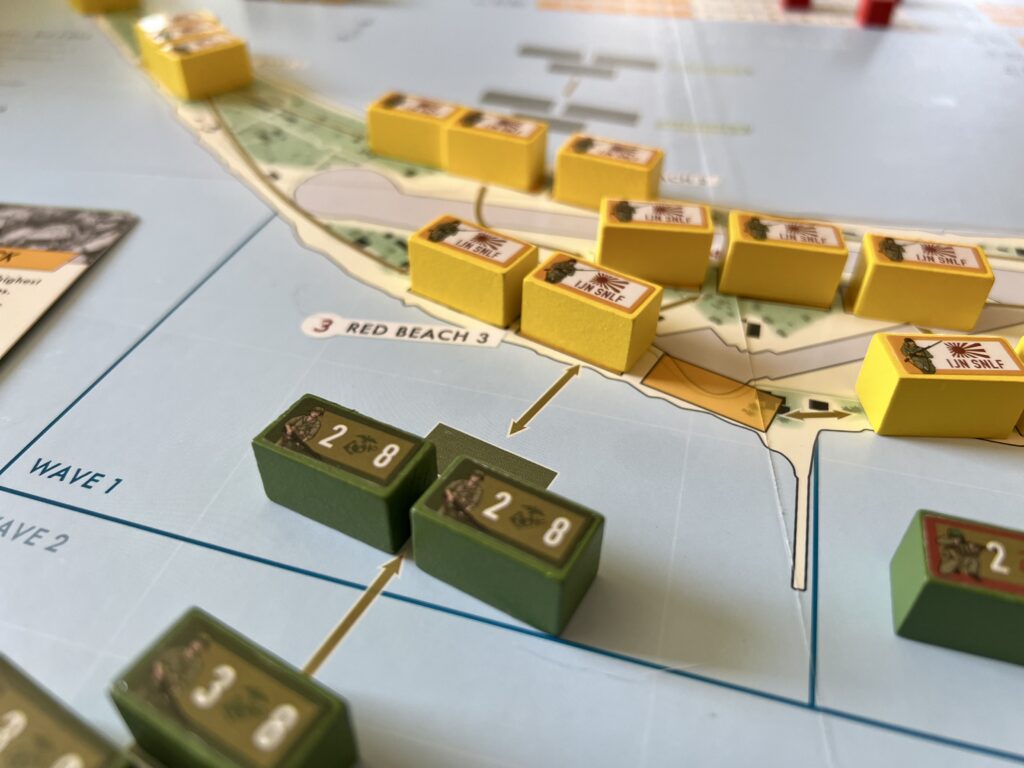
The game looks stark and beautiful, with a flat coloured map dotted with chunky yellow and green blocks. The board was apparently inspired by a black and white drawing made by the marines, submitted in an after-action report. It’s reminiscent of the invasion maps the troops would have studied on the deck of the ships as they made their approach to the island. This minimalist look makes it very easy to understand what’s happening at a glance. The cards are largely text dominated, which is good because they explain all their nuances while giving a bit of historical flavour. About 1/4 of the top of each card is a space devoted to photos of the struggle.
This was my first experience with a Worthington rulebook, and I found it to be well constructed. It’s only about 12 pages in length, and it explains the game well. There were only one or two times I had to go online to get answers to questions, and one of those times was just because I missed a “Key rule” highlighted in a coloured text box. The other was a strange selection of words around the “regroup” action, which is intended to boost your cohesion. Aside from this, learning the game from the rulebook was crystal clear.
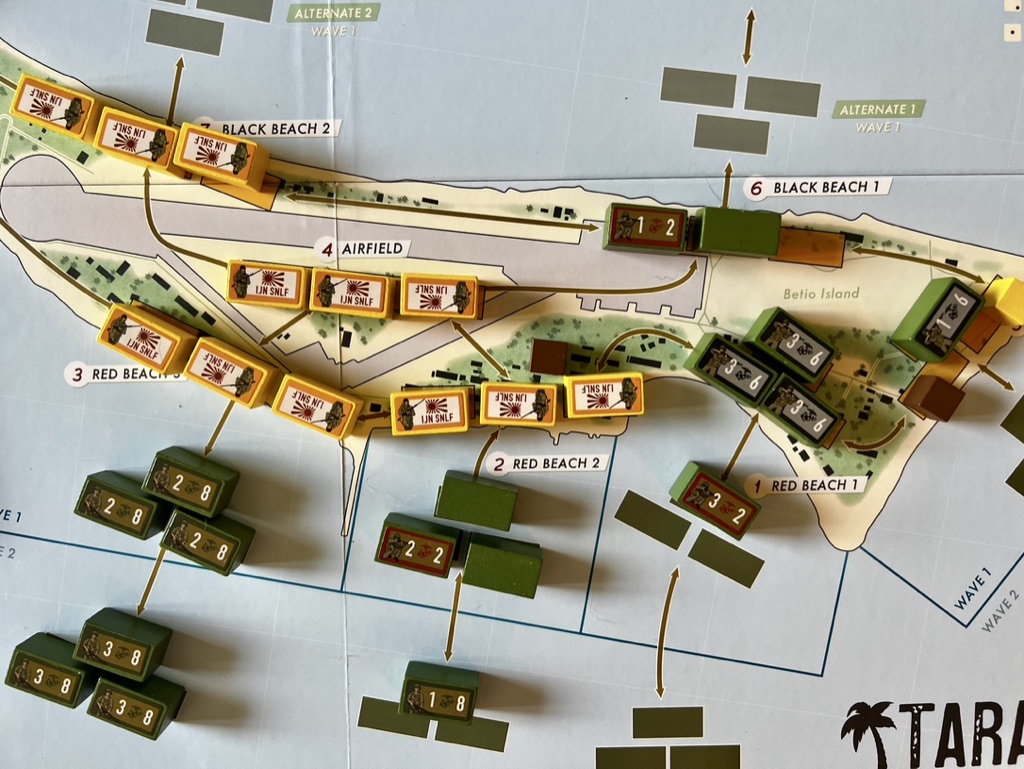
Tarawa 1943 is played over a finite number of rounds. It can either end on the turn after the last of the Japanese cards has been played (of which there are 24 in a standard game), or it can end when the USMC player controls all the positions on the island. The gameplay is fast, so typical games won’t require longer than an hour, or possibly two if you’re taking your time. Once you reach one of those end conditions, victory points are tallied. This tally tends to favour the Japanese if there were a lot of USMC casualties, so this is probably where you’ll lose.
…and I don’t say that disparagingly! Tarawa 1943 is an honest to goodness challenge, and if you’re designing a game about the hell-on-earth experience of this battle, it should be challenging. If it was anything less than challenging, it would be doing a bit of a disservice to the memory of the troops who actually fought there.
A turn is fairly straightforward. You flip a Japanese card, perform that action (if possible), then you take your USMC action, which could be moving, attacking, rotating battalions, regrouping, or bringing in a new battalion (there are two additional battalions waiting to land). Almost everything you do as the USMC in Tarawa 1943 incurs a cohesion penalty, or is designed to alleviate cohesion penalties – so this is a fairly major part of managing the game. If your cohesion gets too low, your troops become exhausted, and they can’t effectively fight any longer.
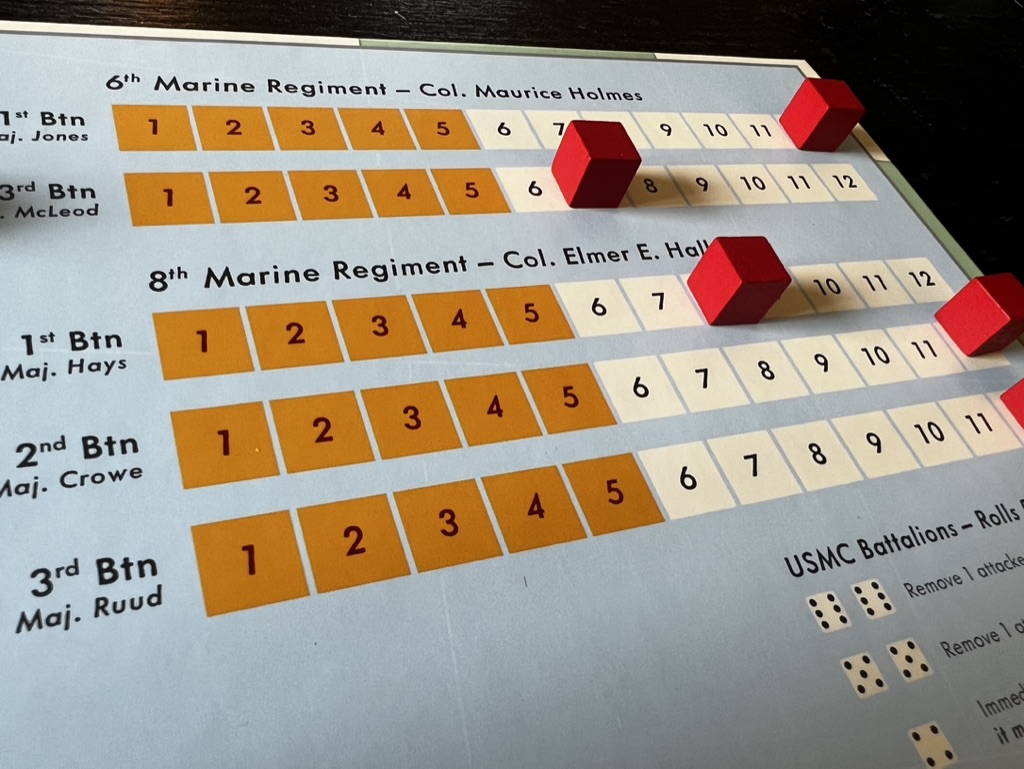
Meanwhile, you must push the fight forward as fast as you can (remembering that each leftover Japanese card at the end of the game is worth another point), and hold off the Japanese counter attacks. All attacks are handled by a handful of dice checked against a simple table (which is conveniently located on the board). You can choose to reroll some die results, but again it comes at the cost of cohesion loss… so you need to be careful. One cohesion may be worth rerolling three bum dice, but is it worth it to reroll one?
It’s a brutal experience, especially when the Japanese roll a few 6’s – wiping out whole battalions of marines in a single go. Sometimes you may have cards to mitigate this, but more often than not, you’ll be stuck watching, aghast at the events unfolding in front of you.
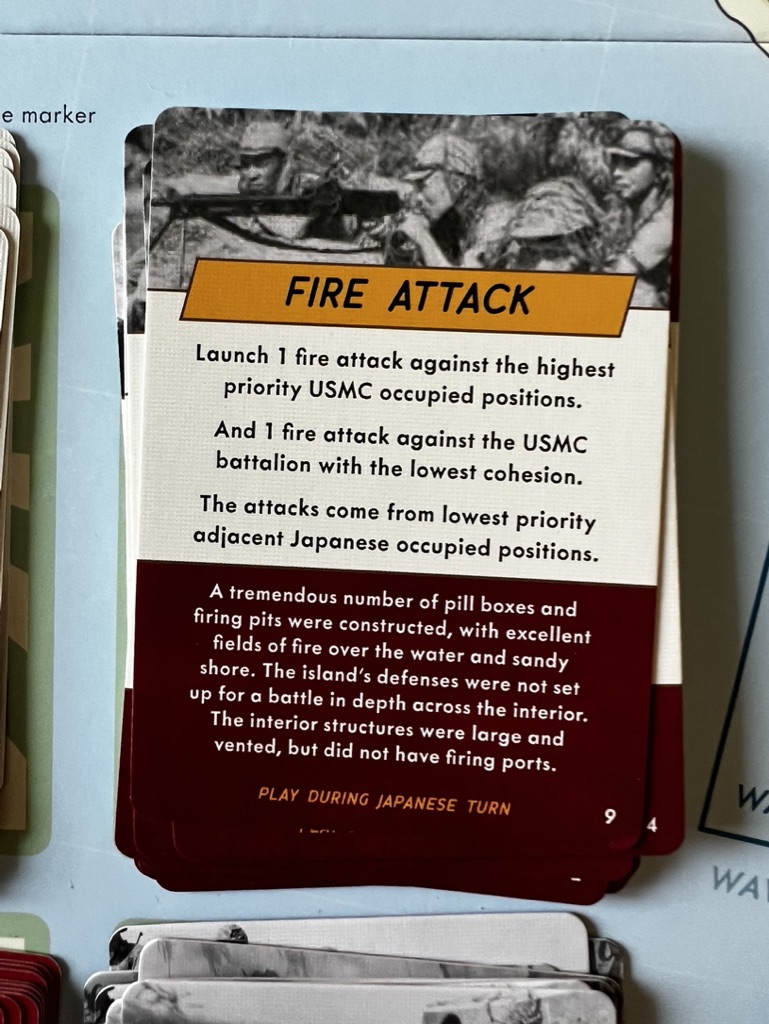
For some people, this will be too much. Too much randomness imparting too much chaos. My favourite critical quote from a BoardgameGeek comment was “In essence, however, it is a game that can be reduced to push your luck effects and reacting to the random cards from the Japanese deck. there are no really sustainable strategic options here.”
I’m not sure I believe that it’s entirely devoid of strategic options, but the writer hits on a valid criticism. The game is largely a push your luck exercise, with an element of proper timing. While there are a handful of reaction cards that can mitigate some of the things that Japanese might throw at you, they are thin. The result is that this can feel a bit like an abstract beer and pretzels style game at times. With that said, you do clearly make important decisions throughout the game – but they exist in a very narrow decision space – and I think this approach works well for a solitaire game designed to last an hour.
Mostly though, I just find it fun to run up against adversity and to be trampled by bad luck. I tend to look for little ways that I can maybe swing things in my favour, and while they are sparse here, they are available. Maybe it’s this scarcity of hope that has made Tarawa 1943 one of my favourite solitaire games of the last year. Feeling helpless to the hand of fate is something I imagine those marines must have experienced on the beaches, and Tarawa 1943 mimics a tiny iota of that. Despite this (or maybe because of it) I keep returning again and again, hoping that this time I may finally figure it out, or get lucky, and come out on top.

